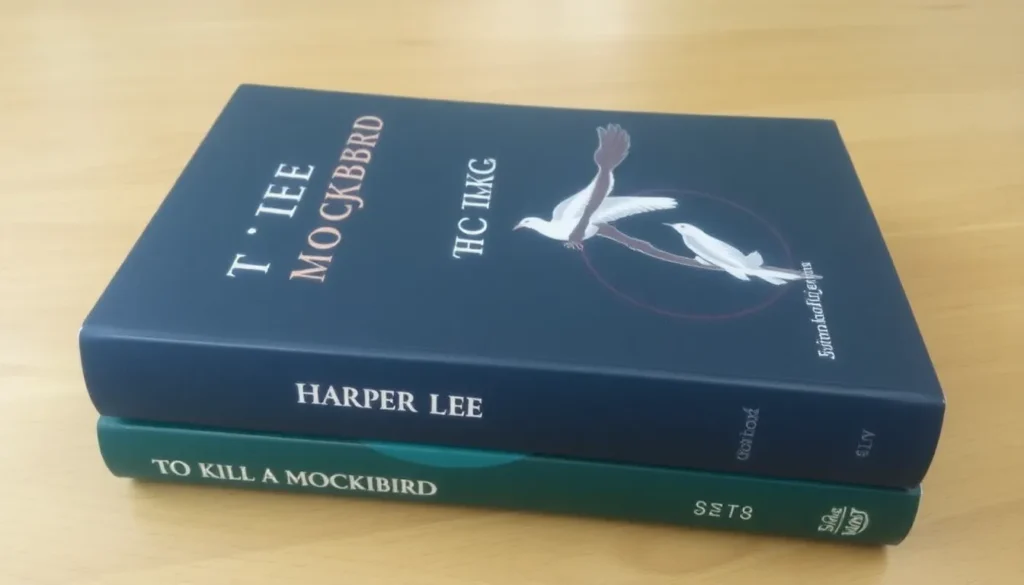Traveling with Books: To Kill a Mockingbird by Harper Lee

- Summary of To Kill a Mockingbird
- Harper Lee: The Author Behind the Masterpiece
- The Movie Adaptation on Netflix
- Harper Lee's Personal Life: Was She LGBTQ?
- The Connection Between Harper Lee and Scout Finch
- Key Themes Explored in the Novel
- The Symbolism of the Mockingbird
- The Lasting Impact of To Kill a Mockingbird
Reading is a journey that can transport us to different times and places, allowing us to confront the complexities of human nature and morality. One such literary masterpiece is Harper Lee's To Kill a Mockingbird, a profound exploration of racial injustice, moral growth, and the loss of innocence. With its enduring themes and vivid characters, this novel continues to resonate with readers, offering new insights upon each reading.
Summary of To Kill a Mockingbird
Set in the fictional town of Maycomb, Alabama during the 1930s, To Kill a Mockingbird takes us through the eyes of Scout Finch, a young girl whose childhood is forever altered by the events surrounding her father's defense of a black man accused of raping a white woman. The narrative intricately weaves the innocence of childhood with the harsh realities of prejudice and inequality.
Maycomb is not just a backdrop; it is a living entity that reflects the social dynamics of the time. Through Scout's experiences, readers witness the deeply ingrained racism and classism that permeates the town. The book opens with Scout's recollections of her childhood adventures with her older brother Jem and their friend Dill, setting the tone for a story that juxtaposes the whimsical nature of childhood with the sobering lessons of adulthood.
Harper Lee, born in Monroeville, Alabama in 1926, drew heavily from her own experiences and observations to craft this powerful narrative. Her father was a lawyer, much like Atticus Finch, and her upbringing in the racially charged environment of the South shaped her understanding of morality and justice. Lee's only other published work, Go Set a Watchman, was released in 2015, decades after To Kill a Mockingbird, and it offers insights into the lives of the characters as adults.
The author's choice to tell the story through a child's perspective allows for a unique lens through which the complexities of human behavior and societal norms are examined. This perspective adds depth to the narrative, allowing readers to grapple with the themes of empathy, courage, and moral integrity alongside Scout.
The Movie Adaptation on Netflix
The timeless story of To Kill a Mockingbird has been adapted into various forms, most famously into a 1962 film starring Gregory Peck as Atticus Finch. This adaptation brought the characters and themes to life in a new way, captivating audiences with its poignant portrayal of the original story.
Currently, you can find the film on Netflix, introducing new generations to this classic tale. The adaptation remains faithful to the source material while enhancing the emotional weight of the narrative through powerful performances and cinematography. The film, like the novel, serves as a critical reminder of the social injustices that persist in society.
Harper Lee's Personal Life: Was She LGBTQ?
Harper Lee's personal life was as intriguing as her literary contributions. While there has been speculation about her sexual orientation, particularly in light of her close friendship with Truman Capote, her sexuality remains a topic of debate among scholars and readers. Lee was known for her privacy and reluctance to discuss her personal life in public, often shying away from the spotlight that followed her after the success of her first novel.
What is clear is that her experiences and relationships informed her writing, and her ability to create complex characters reflects a deep understanding of human nature, regardless of her personal inclinations.
The Connection Between Harper Lee and Scout Finch
The character of Scout Finch is often seen as a reflection of Lee herself. Both share a strong sense of curiosity and a desire for justice, often questioning the status quo. The innocence of Scout's childhood serves as a stark contrast to the harsh realities of the world around her, mirroring Lee's own journey of understanding the complexities of human behavior.
In many ways, Scout's growth throughout the novel parallels Lee's own evolution as a thinker and writer. Through Scout's eyes, we explore vital lessons about empathy and the importance of standing up for what is right, no matter the consequences.
Key Themes Explored in the Novel
To Kill a Mockingbird delves into several significant themes that remain relevant today:
- Racial Injustice: The novel critiques systemic racism and the moral failures of society.
- Empathy: It teaches the importance of understanding others' experiences, a lesson embodied by Atticus Finch.
- Loss of Innocence: Scout and Jem grapple with the realities of human nature and morality as they confront prejudice and hatred.
- Courage: The characters display various forms of bravery, from Atticus's defense of Tom Robinson to Boo Radley's eventual intervention.
The Symbolism of the Mockingbird
The mockingbird serves as a powerful symbol throughout the narrative. Atticus teaches his children that it is a sin to kill a mockingbird, as they only exist to bring beauty and song to the world. This metaphor extends to characters like Tom Robinson and Boo Radley, who, despite being vulnerable, embody goodness and innocence. The destruction of these innocent beings highlights the moral decay present in society, prompting readers to reflect on their own actions and beliefs.
As the story unfolds, we witness how the mockingbird's symbolism resonates with the central theme of protection and moral responsibility. The novel compels us to consider who the "mockingbirds" are in our own lives and the importance of safeguarding innocence in a world filled with prejudice.
For those who wish to explore the depth of Lee's work further, I recommend checking out this insightful video review that delves into the subtleties and intricacies of To Kill a Mockingbird, offering a fresh perspective on its enduring relevance:
The Lasting Impact of To Kill a Mockingbird
Since its publication in 1960, To Kill a Mockingbird has sparked discussions about race, morality, and justice in America. Its themes are as relevant today as they were during the civil rights movement, prompting readers to confront their own beliefs and biases. The book's impact is reflected in its continued presence in educational curricula and its influence on contemporary literature and social discourse.
Harper Lee's ability to tackle complex issues with grace and empathy sets her apart as a literary giant. Her work encourages readers to reflect on their own roles in society and to strive for a more just world, making To Kill a Mockingbird an essential read for anyone seeking to understand the intricacies of human nature.
If you haven't yet experienced this literary treasure, consider purchasing it through Amazon or explore other options at La Casa del Libro.
In essence, To Kill a Mockingbird is more than just a story; it is a profound exploration of humanity that invites us to reflect, empathize, and ultimately, strive for justice in our own lives.





Deja una respuesta